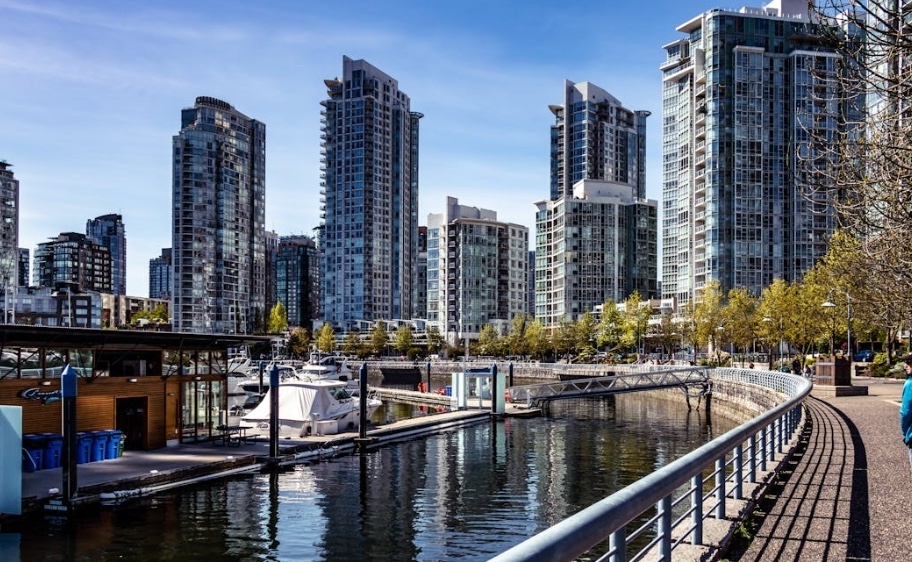Rent keeps climbing in Canada’s biggest cities, and wages aren’t keeping up. For many, a huge chunk of their paycheck goes straight to housing, leaving little for groceries, transportation, or a night out. Vancouver and Toronto are the most obvious examples, topping the rental-wage rankings and showing just how tight the squeeze has become.
It’s more than numbers on a page. When rent eats up so much of a salary, it changes the way people live. Some move farther from work, others downsize their apartments, and many rethink their daily routines. Yet these cities remain magnets – jobs, culture, and lifestyle keep drawing people in, keeping demand high.
Seeing why Vancouver and Toronto top these rankings shows what city life is really like, and why making rent and income stretch far enough has become such a daily challenge.
Rental-Wage Rankings: How They’re Measured
Rental-wage rankings look at how much of a worker’s income goes toward rent. Basically, they show how many hours someone has to work just to cover housing.
The key factors include:
- Median monthly rent for one- and two-bedroom apartments.
- Median wages for full-time employees.
- Affordability ratios comparing rent to income.
- Local housing demand and supply.
Recent data show Vancouver and Toronto at the top of these rankings. Residents here spend a bigger slice of their earnings on rent than almost anywhere else in Canada.
Why Vancouver and Toronto Lead
A few key reasons keep Vancouver and Toronto at the top of rental-wage rankings:
- High demand: More people keep moving in for work, school, or lifestyle, which puts pressure on available apartments.
- Limited supply: Space is tight, especially downtown, so competition drives rent higher.
- Wages can’t keep up: Many jobs pay well, but rent rises faster than salaries.
- City appeal: Culture, nightlife, restaurants, and convenient amenities make these cities very desirable.
- Investor activity: Real estate buying and speculation push prices even higher.
Even with solid paychecks, many residents still feel stretched. To cover rent, they often end up trading off space or location. With demand outpacing supply, cities like Vancouver and Toronto continue to top the charts when it comes to rental costs compared to wages.
Lifestyle & Living Spaces
Rising rents mean many residents are getting creative with their homes. Small apartments are being designed to maximize space and comfort. Common approaches include:
- Multifunctional furniture for small spaces.
- Minimalist designs to keep rooms open and uncluttered.
- Smart storage solutions to hide essentials.
- Personal touches to make apartments feel cozy.
In cities where space is limited, renters are getting creative with their interiors. A living room might double as a workspace by day and a social hub by night. Many renters host friends or share meals in their apartments. Planet Bingo in Vancouver, known for iconic bingo in Canada, seats hundreds but still feels welcoming. The hall has wide layouts, electronic stations, and food areas. These features prove how interiors can balance practicality with entertainment. Renters can take inspiration from this, seeing how flexible design encourages social connection and responsible play at home.
Broader Implications
The rental-wage gap affects more than individual budgets. Some of the broader effects include:
- Affordability challenges: Rent takes up more of household income, limiting discretionary spending.
- Migration patterns: People may move to suburbs or smaller cities seeking cheaper rents.
- City planning pressure: Municipalities face pressure to create new housing options and incentives.
- Lifestyle choices: Proximity to work, amenities, and transportation often guide neighborhood selection.
- Entertainment shifts: Rising costs influence spending on leisure, dining, and other entertainment options.
Future Outlook for Canadian Rentals
Rent in Vancouver and Toronto isn’t slowing down anytime soon. People are feeling it in different ways: some cram into tiny apartments, others pack up and move farther out, chasing more space. The cities can’t just wait for the problem to fix itself. Options like building new homes, changing zoning rules, or trying out rent control are being considered, but none of these are quick fixes.
With smart ideas and careful planning, Vancouver and Toronto could be more than just busy economic hubs. They could become models for balancing rent, wages, and quality of life. The mix of people living in these cities makes planning tricky. Young professionals often choose convenience over size, while families hunt for schools and parks. How planners handle these needs will shape what city life looks like in the next ten years.
Making Rentals Work for Everyone
Rising rents compared to wages is a reality residents can’t ignore. People are finding ways to cope:
- Downsizing or sharing apartments
- Moving to suburban areas
- Adjusting daily lifestyles to make ends meet
These choices go beyond just where people live. They shape migration patterns, affect city planning, and even change how people spend their free time. For both residents and policymakers, Vancouver and Toronto offer lessons in handling urban growth. With innovative ideas and careful planning, rental markets can be designed so people don’t have to give up comfort or their lifestyle just to afford a place to live.





Comments are closed